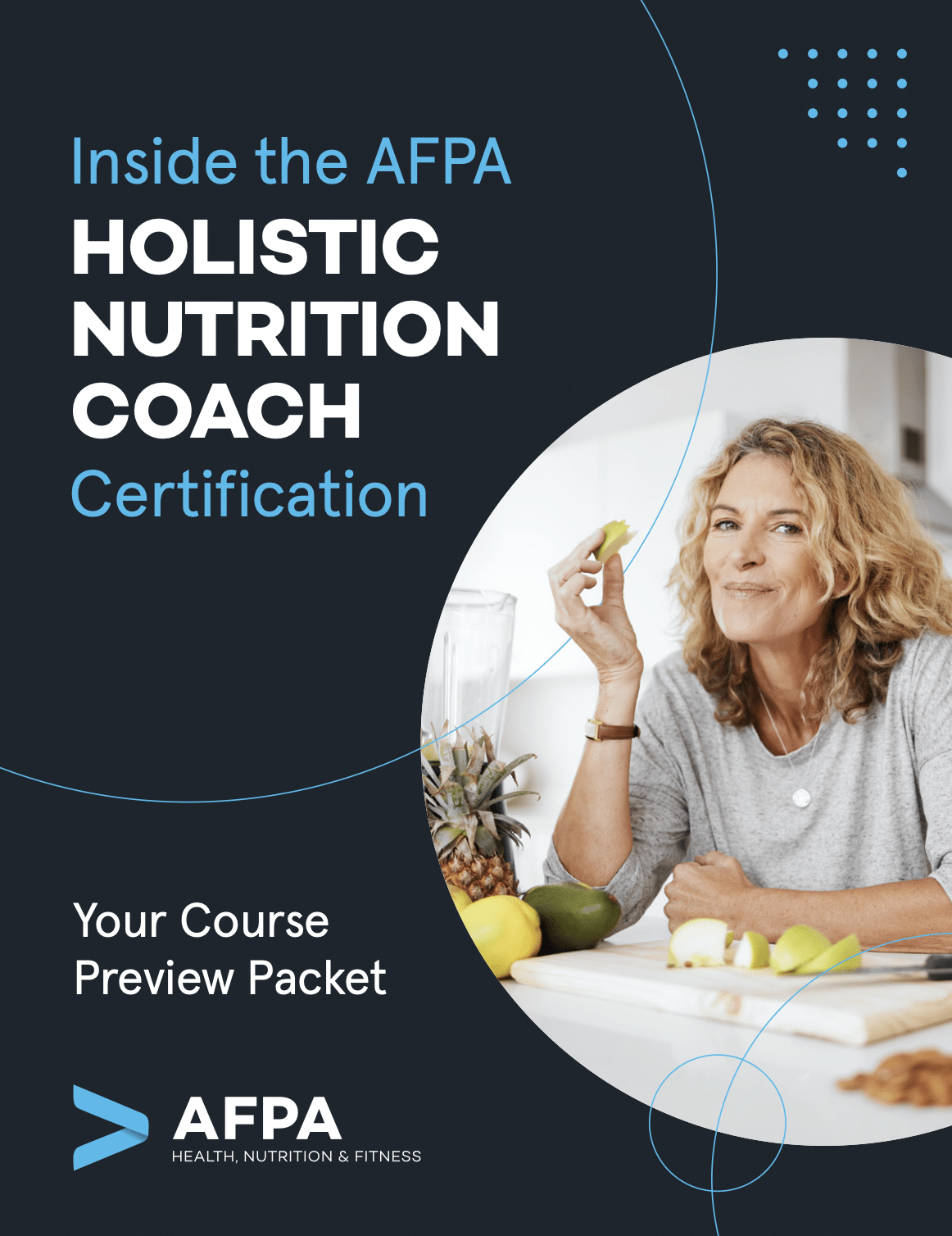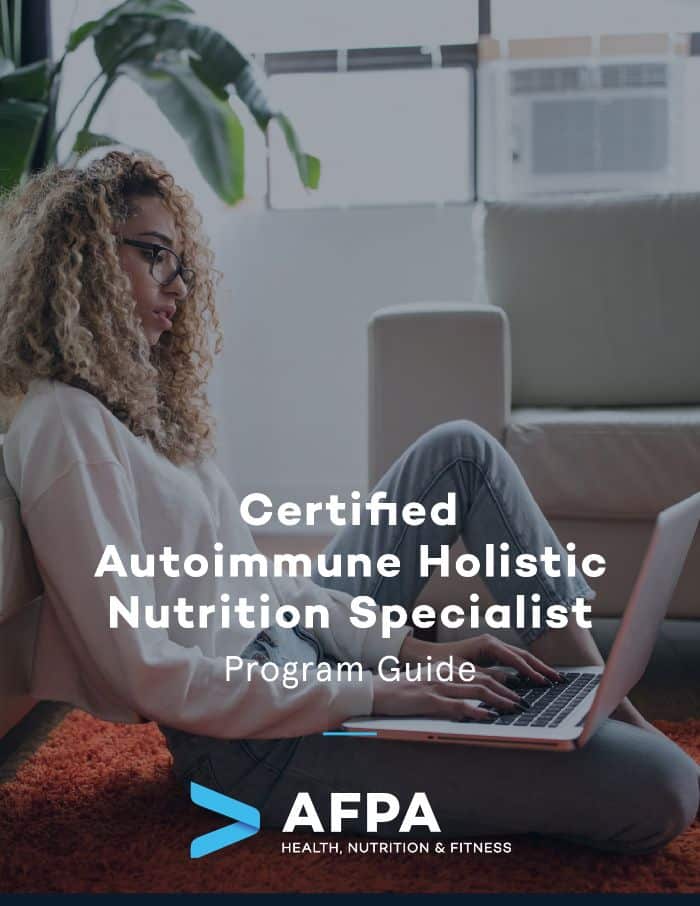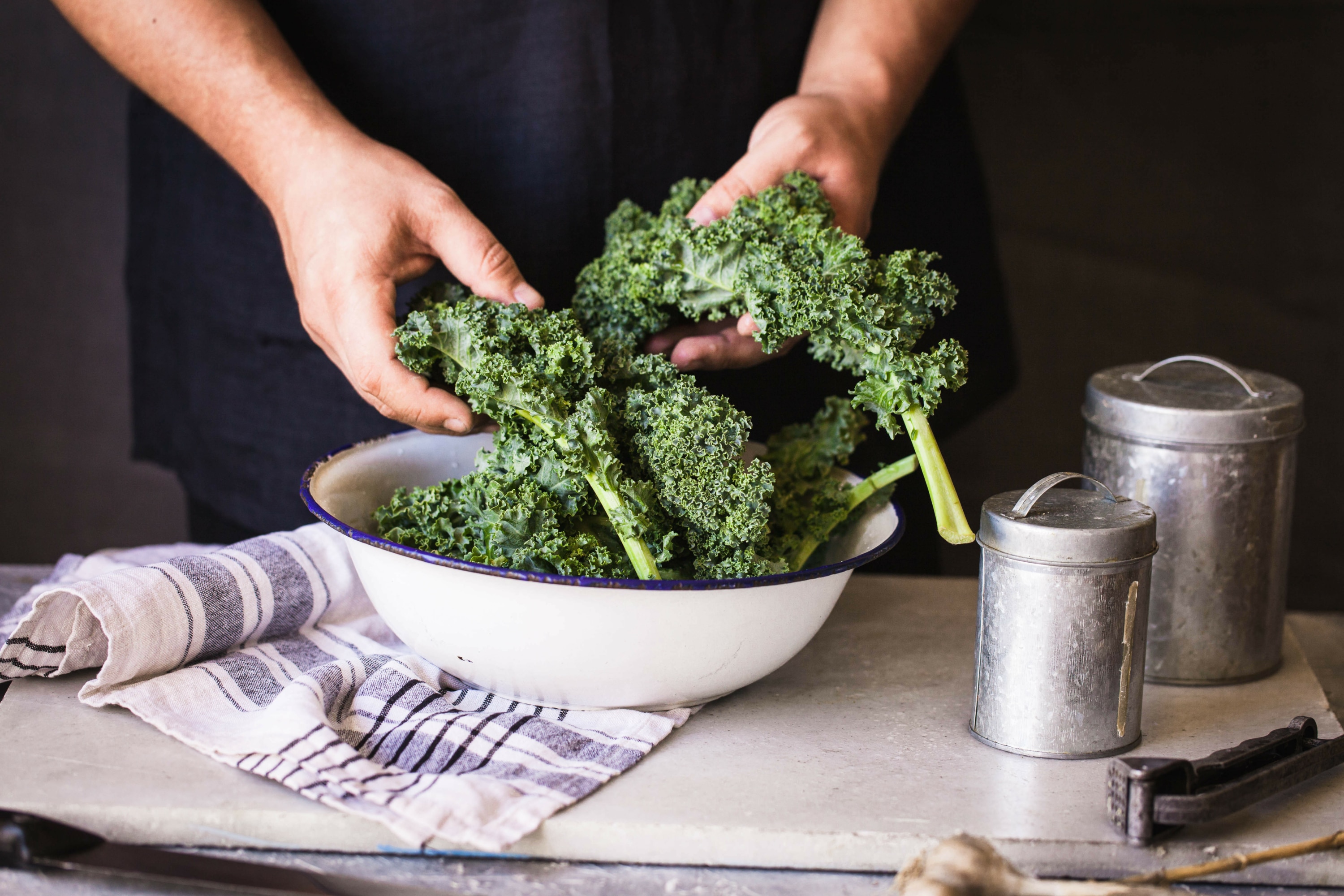In recent years, the awareness behind celiac disease has increased largely due to the rise in gluten-free diets and gluten-free food products.
People with celiac disease face complicated nutritional challenges. Not only do they face dangerous health consequences from eating gluten, but many sufferers may fall victim to nutrient deficiencies and malabsorption.
A major reason why some people who suffer from celiac disease can’t stay gluten-free is that they don’t understand how to diet properly.
As a holistic health nutrition coach, it’s your job to provide the evidence-based research and guidance to help them overcome these issues.
This guide will educate you on the best practices and strategies to incorporate when creating effective diet plans for your clients with celiac disease.
Want to learn more about what it takes to be a Holistic Nutrition Coach? Get an inside look.
What Is Celiac Disease?
Celiac disease (also called coeliac disease) is an autoimmune condition that can damage the small intestine. Specifically, the small intestine has many small projections (villi) along it, which help absorb nutrients from food.
In celiac disease, these are damaged, and nutrients can’t be absorbed properly. It causes the immune system to see gluten as a threat, attacking both the gluten and the villi of the small intestine. Therefore, people with celiac disease need to avoid foods containing gluten.
Celiac disease should not be confused with gluten intolerance. Gluten intolerant individuals can tolerate small amounts of gluten up to a certain threshold, whereas those with celiac disease cannot tolerate any gluten at all.
Bottom line: Celiac disease is a genetic condition that causes damage to the gut lining when gluten is eaten. Make sure to rule out celiac disease before considering gluten intolerance.
What Is Gluten?
Gluten is a sticky, glue-like protein that’s found in wheat, barley, and rye. It’s also used as a binding agent in various products. For example, processed barbecue sauces contain gluten.
When crafting a diet plan for your clients with celiac disease, it’s important to pay close attention to the nutrition label before adding a certain food product to their diet plan.
To find out whether or not your client has celiac disease, there are various tests that can be performed by a medical professional. A few tests to screen for celiac disease include:
- tTG-IgA Test
- IgA Endomysial antibody (EMA)
- Total serum IgA
- Deamidated gliadin peptide (DGP IgA and IgG)
How to Create an Effective Diet Plan for Clients With Celiac Disease
Because eating gluten can trigger a harmful reaction, people with celiac disease must take special precautions to avoid it completely.
Even small amounts of gluten—such as in seasoning—can cause inflammation, which can be harmful to your client’s health.
Your main goal as a nutrition professional when treating clients with celiac disease is to provide a diet plan that not only removes gluten altogether but also incorporates nutrient-dense foods to ensure that they don’t fall victim to nutrient deficiencies.
Here is a five-step plan that will help you create an effective nutrition regimen for your clients with celiac disease.
Step 1: Assess current dietary knowledge and needs
Before you start crafting a diet plan for your client, take a detailed diet history of current food habits, and try to get a better understanding of the client’s current nutrition knowledge.
This helps you create a more effective nutrition regimen, as you’ll know how much (or how little) to be involved as you begin to work together.
In addition, emphasize the importance of consuming a diet consisting of mostly plants and whole-food sources. Many people with celiac disease make the mistake of eating “gluten-free” foods that are processed or frozen, which are full of excipients and unhealthy ingredients.
Step 2: Eliminate gluten
Once you’ve gotten to know your client’s nutritional expertise, the next step is to educate them on the major sources of gluten. Here is a list of foods with gluten that clients with celiac disease should avoid at all costs:
- Wheat, including graham, semolina, durum, wheat berries, spelt and farro
- Rye
- Barley
- Triticale
- Malt, including malt extract, malted milk, and malt vinegar
- Brewer’s yeast
- Wheat starch
The following list contains processed foods that should be avoided unless they have the “certified gluten-free” label:
- Beer
- Cereal
- Crackers
- Pasta
- Soups
- Sauces
- Desserts, including cookies, cake, and pie
- Bread
- Salad dressing
- Soups
- Fries
Note: Remind clients of how important it is to be aware of labels so they can check for foods manufactured in facilitates that contain gluten. This is crucial if your client is highly intolerant to gluten.
Step 3: Give them gluten-free substitutions
Foods high in gluten are prevalent in carbohydrate foods. Speak with clients about their current health goals aside from staying gluten-free. If they’re open to low-carbohydrate diets, such as Paleo or the Ketogenic diet, it may be a great option.
Provide a list of gluten-free substitutions based on your client’s food preferences.
A great way to ensure they stick to your diet regimen is by showing them gluten-free food options that have a similar taste or texture as their gluten counterparts. For example, if a client with celiac disease has a love for salty potato chips, suggest gluten-free options such as pork rinds to satisfy cravings.
Step 4: Provide detailed dietary information
Once you have a dietary plan in place for your client with celiac disease, educate the client on important nutrition topics.
For example, explain to the client the importance of addressing any micronutrient deficiencies they may come across by not sticking to the diet plan you created for them. Not only does this motivate the client to stay on track with your nutrition regimen, but it also allows the client to be more creative with gluten-free meals further down the road.
Step 5: Carefully monitor client results
Once you’ve given your client with celiac disease a well-crafted diet plan, check-in regularly to assess the client’s progress. Depending on how knowledgeable the client is, there may be a slight learning curve.
As you get feedback from your client, consider altering the nutrition regimen based on the results obtained so far. For example, if it’s difficult for your client to get the proper amount of calories from carbohydrates, consider changing the food source to something more palatable.
The first two weeks will come with the most challenges, especially if your client is new to a gluten-free diet. It’s important to assess and provide a solution to any obstacles the client may come across during this period.

Take a Peek Inside AFPA’s Holistic Nutrition Coach Certification
Curious what it’s really like to study holistic nutrition at a professional level? Get the free course preview and see the actual learning modules, frameworks, and real-world coaching applications that prepare AFPA graduates for success.
How to Order When Your Client With Celiac Disease Is Dining Out
One of the most common culprits of eating gluten as a person with celiac disease is eating meals when away from home.
Considering only a small amount of gluten can trigger symptoms, it’s important that your clients are aware of cross-contamination when dining out. For example, if they’re choosing fried food at a restaurant, remind them to ask the cook if the oil they use contains gluten.
Also, advise your clients with celiac disease to call the restaurant in advance to see if they have any gluten-free options available. When they’re ordering, clients should emphasize to the server how harmful it can be to their health if they accidentally consume gluten.
Many restaurants that offer gluten-free options advise people with celiac disease to eat with caution.
Encourage clients to make it a habit to ask detailed questions about the ingredients and the way food is prepared anytime they’re eating out.
Most, if not all restaurants are extremely accommodating, so clients should have no issue with dining out as long as they point out their gluten intolerance to the cook, server, or manager.
How to Maintain Healthy Nutrient Levels With Celiac Disease
One common obstacle that people with celiac disease face is nutrient deficiencies.
When people with celiac disease accidentally consume gluten, the inflammatory reaction can influence how they absorb nutrients. This means, even if they’re eating nutrient-dense foods, their body can’t properly digest it.
In addition, eating gluten-free is a restrictive diet. Foods that contain gluten also contain essential micronutrients. A proper diet plan for clients with celiac disease should include various gluten-free, nutrient-dense foods to ensure they are getting optimal levels of vitamins and minerals.
People with celiac disease can be deficient in a range of micronutrients; the most common ones include vitamin B12, calcium, iron, and vitamin D.
Here are a few great food sources to help your clients get ample amounts of these essential vitamins and minerals:
- Vitamin D – Fortified dairy such as yogurt or milk, fortified nondairy such as soy or almond, sardines, eggs, and salmon
- Calcium – Dairy, kale, bok choy, tofu, oranges, dried figs, and fortified orange juice
- B Vitamins – Beans, lentils, spinach, mushrooms, chicken, asparagus, lentils, broccoli, and sunflower seeds
- Iron – Beef, white beans, dark chocolate, lentils, tofu, cashews, chickpeas, and spinach
- Zinc – Lobster, dark meat chicken, cashews, and beef
Consider Recommending a Multivitamin to Take With Celiac Disease
If you suspect your client isn’t getting essential vitamins from whole-food sources, consider recommending a multivitamin or a specific supplement. When working with a client with celiac disease, pay close attention to energy levels and signs of fatigue, as well as emotional and physical well-being. In many cases, people with celiac disease who have a nutrient deficiency are commonly tired and also exhibit feelings of being cold.
There are a variety of nutritional deficiencies associated with celiac disease. The most common deficiencies include fiber, iron, calcium, magnesium, zinc, folate, niacin, riboflavin, vitamin B12, and vitamin D.
Keep in mind that once clients restore their nutrient levels and their intestines are functioning properly again, they likely won’t need to take a supplement with a specific vitamin or mineral.
Foods Your Client Can Eat While Managing Celiac Disease
Your client may feel overwhelmed by the list of foods that contain gluten. After all, many of the tasty carbohydrates we’re all so used to having are on that list. Luckily, there’s a wide selection of tasty, nutrient-dense gluten-free options to choose from.
Here is a list of gluten-free foods to incorporate into your client’s diet plan:
- Eggs
- Meat
- Fish
- Corn
- Potato and rice flour
- Tapioca
- Soy
- Sorghum
- Quinoa
- Millet
- Fruits
- Vegetables
- Nuts
- Seeds
- Dairy products (be sure to check the label)
- Flax
- Rice
- Nut flours
- Cassava
- Beans and legumes
Side note: Dietitians have advised against oats in the past if you have celiac disease. But new research shows that oats in moderation may be safe to eat as long as they didn’t come in contact with wheat during processing.
Gluten-Free Substitutes
With the increased awareness behind celiac disease, many food products that contain gluten have gluten-free alternatives, which make it much easier for your clients while shopping.
As a general rule, traditional wheat products such as bread, crackers, pasta, and other baked goods are not gluten-free. However, various gluten-free options use alternative flours.
Here are the most common gluten-free substitutes your clients will see at their local health food store:
- Cereal – Encourage your clients to always check for the “gluten-free” label before purchasing gluten-free cereal. It’s important to also check the nutrition label because some ingredients may contain malt flavoring or extract, which contains gluten.
- Sauces and soups – One of the biggest sources of hidden gluten, soups and sauces use wheat as a thickener. Make sure your client pays close attention to canned foods, especially those that are cream-based.
- Alcohol – Some types of wine and most beers contain gluten. According to the National Institutes of Health’s Celiac Disease Awareness Campaign, distilled alcohol is inherently gluten-free. This includes gin, vodka, scotch whiskey, and rye whiskey. Although whiskeys are derived from wheat, barley, or rye, the distilling process removes the gluten proteins.
Gluten-Free Labels and Shopping at the Grocery Store
When you’re creating a nutrition plan for clients with celiac disease, giving them sound advice while grocery shopping is crucial.
Here are a few critical factors and helpful tips to discuss with your client:
- Read food labels carefully. Frozen, canned, and processed foods specifically are notorious for having gluten, even if it’s a food that’s otherwise gluten-free.
- Be on the search for the “gluten-free” label. By law, foods with this label must contain less than 20 parts per million of gluten, which is well below the threshold to cause symptoms in people with celiac disease. If clients are eating a lot of packaged gluten-free products, they could end up ingesting a lot of gluten. It’s always best to recommend sticking with naturally gluten-free foods.
- Foods labeled gluten-free are more expensive. If your clients are on a budget, advise them to shop for natural food sources that are gluten-free. A great tip to recommend is to stick to the outer parts of the grocery store. A large portion of foods containing gluten is typically placed in the center because they don’t need to be refrigerated or frozen.
- Protein and fats are almost always gluten-free. Clients who are relatively new to dieting can easily find a large selection of gluten-free foods by sticking to healthy protein and fat sources. Advise your clients to shop for healthy proteins and fats, such as meat, fish, eggs, and avocados, before resorting to searching for food with the “gluten-free” label.
Helping Your Clients With Celiac Disease Requires Careful Planning and Monitoring
When a client is first diagnosed with celiac disease, it can feel very overwhelming. The standard Western diet is full of foods high in gluten. Processed carbohydrates such as chips, alcoholic beverages, and fast food are typically loaded with gluten.
But that doesn’t mean your client with celiac disease must resort to an extremely restrictive, gluten-free diet. As we’ve shown in this article, there are tons of delicious, nutrient-dense food sources to choose from.
Sticking to healthy, naturally gluten-free food sources and giving them a detailed list of nutrient-dense options is a great way to improve the health and well-being of your clients with celiac disease.

Learn How to Become an AFPA Autoimmune Holistic Nutrition Specialist in Less Than 6 Months
Become an expert in helping people living with an autoimmune disease feel better.
The information in this article is not to be considered medical advice. Please do not make any changes to your lifestyle without discussing it with your doctor.
The author nor AFPA should not be held liable to any party for any direct, indirect, punitive, special, incidental or other consequential damages arising directly or indirectly from any use of this material, which is provided “as is” and without warranties.
If you want to reprint or republish a post from this site, then you are welcome to do so as long as you include the link.



